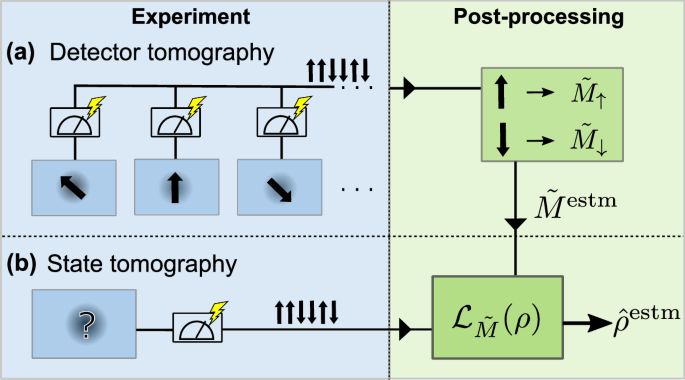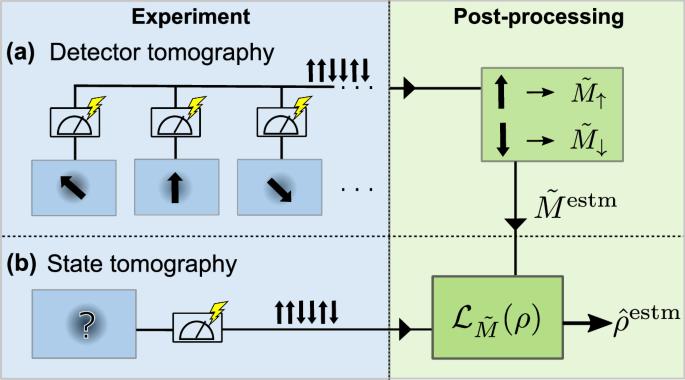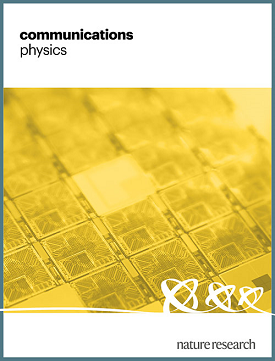在超导量子比特上测试了读出误差减弱量子态层析技术
IF 5.4
1区 物理与天体物理
Q1 PHYSICS, MULTIDISCIPLINARY
引用次数: 0
摘要
量子技术在很大程度上依赖于量子系统的精确控制和可靠读出。目前的实验受到众多噪声源的限制,而这些噪声源只能通过简单的分析模型来部分捕捉,因此需要对噪声源进行额外的表征。我们测试了在由量子两级对象(量子比特)组成的系统中,读出误差缓解技术纠正噪声的能力。为了探究此类方法的极限,我们设计了一种基于量子态层析成像(QST)和量子探测器层析成像(QDT)的超经典读出误差缓解协议,前者可估算量子系统的密度矩阵,后者可描述测量过程。通过在状态层析成像的背景下处理读出误差缓解,该方法在很大程度上变得与读出模式、架构、噪声源和量子态无关。我们在超导量子比特上实现了这种方法,并评估了 QST 重建保真度的提高。我们通过改变重要的噪声源(如次优读出信号放大、谐振器光子群不足、非共振量子比特驱动以及有效缩短的 T1 和 T2 相干性)来鉴定该方法的性能。因此,我们确定了读出误差缓解效果良好的噪声源,并观察到读出不忠实度降低了多达 30 倍。本文章由计算机程序翻译,如有差异,请以英文原文为准。


Readout error mitigated quantum state tomography tested on superconducting qubits
Quantum technologies rely heavily on accurate control and reliable readout of quantum systems. Current experiments are limited by numerous sources of noise that can only be partially captured by simple analytical models and additional characterization of the noise sources is required. We test the ability of readout error mitigation to correct noise found in systems composed of quantum two-level objects (qubits). To probe the limit of such methods, we designed a beyond-classical readout error mitigation protocol based on quantum state tomography (QST), which estimates the density matrix of a quantum system, and quantum detector tomography (QDT), which characterizes the measurement procedure. By treating readout error mitigation in the context of state tomography the method becomes largely readout mode-, architecture-, noise source-, and quantum state-independent. We implement this method on a superconducting qubit and evaluate the increase in reconstruction fidelity for QST. We characterize the performance of the method by varying important noise sources, such as suboptimal readout signal amplification, insufficient resonator photon population, off-resonant qubit drive, and effectively shortened T1 and T2 coherence. As a result, we identified noise sources for which readout error mitigation worked well, and observed decreases in readout infidelity by a factor of up to 30. Significant efforts have been dedicated to mitigate gate errors in quantum devices, while comparatively little attention has been given to the increasing issue of readout errors. The authors present an explicit protocol for comprehensive readout error mitigation with quantum state tomography, and demonstrate its applicability experimentally on a superconducting qubit device.
求助全文
通过发布文献求助,成功后即可免费获取论文全文。
去求助
来源期刊

Communications Physics
Physics and Astronomy-General Physics and Astronomy
CiteScore
8.40
自引率
3.60%
发文量
276
审稿时长
13 weeks
期刊介绍:
Communications Physics is an open access journal from Nature Research publishing high-quality research, reviews and commentary in all areas of the physical sciences. Research papers published by the journal represent significant advances bringing new insight to a specialized area of research in physics. We also aim to provide a community forum for issues of importance to all physicists, regardless of sub-discipline.
The scope of the journal covers all areas of experimental, applied, fundamental, and interdisciplinary physical sciences. Primary research published in Communications Physics includes novel experimental results, new techniques or computational methods that may influence the work of others in the sub-discipline. We also consider submissions from adjacent research fields where the central advance of the study is of interest to physicists, for example material sciences, physical chemistry and technologies.
 求助内容:
求助内容: 应助结果提醒方式:
应助结果提醒方式:


